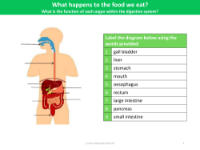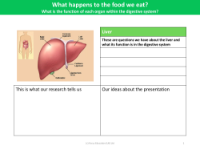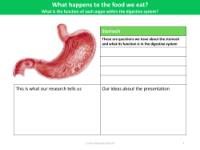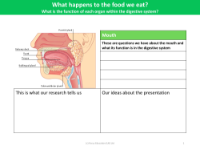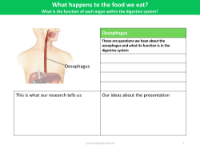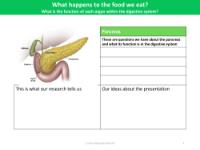What is the function of each organ within the digestive system? - Teacher notes
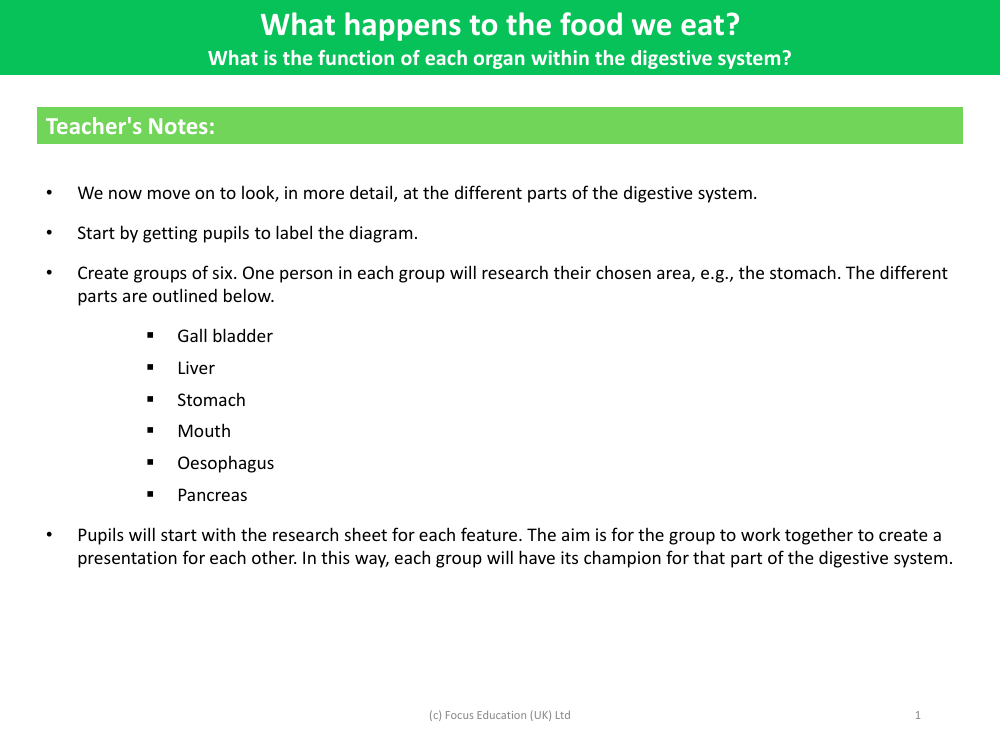
Science Resource Description
The digestive system is a complex network of organs, each with a specific role in the process of digestion. Teachers can facilitate a deeper understanding of these functions by first having pupils label diagrams of the digestive system, then forming groups to research individual organs. Each group member becomes an expert on one organ, such as the gall bladder, liver, stomach, mouth, oesophagus, or pancreas, and prepares to present their findings to the class.
The gall bladder stores and concentrates bile, which is produced by the liver and aids in the digestion of fats. The liver, one of the largest organs, has multiple functions including the production of bile, processing nutrients absorbed from the digestive tract, and detoxifying chemicals. The stomach's primary role is to break down food using stomach acids and enzymes, creating a semi-liquid mixture called chyme. The mouth initiates digestion by mechanically breaking down food with teeth (chewing) and chemically with saliva, which contains enzymes that start the digestion of carbohydrates. The oesophagus is a muscular tube that transports food from the mouth to the stomach through peristaltic movements. Lastly, the pancreas produces digestive enzymes and bicarbonate, which are released into the small intestine to continue the breakdown of proteins, fats, and carbohydrates.

